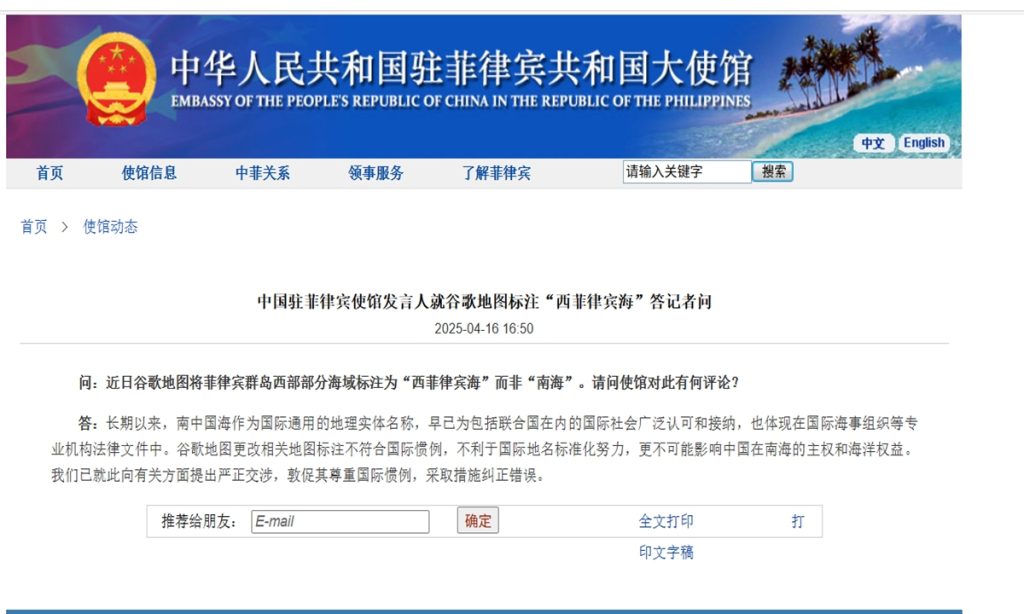Chinese Embassy to Philippines lodges solemn representations with relevant parties after Google Maps label change

In response to media reports that said Google Maps now shows the label "West Philippine Sea," whereas it previously displayed "South China Sea," the Chinese Embassy to the Philippines on Wednesday responded that such change does not conform to international practices and is not conducive to the efforts of international geographical names standardization. It will in no way affect China's sovereignty and maritime rights and interests in the South China Sea.
The embassy has lodged solemn representations with the relevant parties, urging them to respect international practices and take measures to correct the error.
AFP reported on Monday that a Google Maps scan on Monday of the body of water directly west of the Philippines now shows a name once invisible to most users -- the West Philippine Sea.
The name South China Sea remains visible to the north and west of the area newly identified as the West Philippine Sea, AFP reported.
For a long time, the South China Sea, as a commonly used geographical entity name internationally, has long been widely recognized and accepted by the international community, including the United Nations. It is also reflected in the legal documents of professional institutions such as the International Maritime Organization, said a spokesperson from the Chinese embassy.
When asked to comment on Google Maps label change, Lin Jian, spokesperson from Chinese Ministry of Foreign Affairs said on Tuesday that "South China Sea" is the geographic name that has long been used, recognized and accepted by the international community, including countries worldwide and international organizations such as the UN.